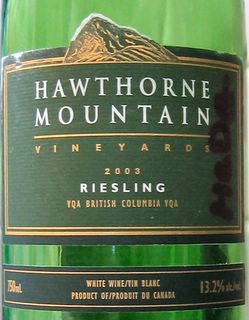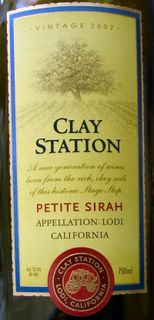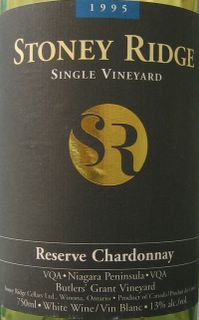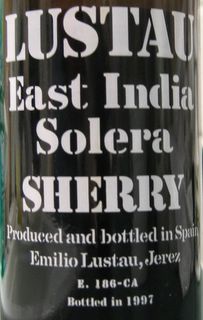We attended the Society for American Wines dinner in the lobby of the Saskatchewan Centre of the Arts on Sunday evening, and had a wonderful time. Ed took notes with his new toy, an Audiovox PPC-6600 Harrier cell phone/PDA. It wasn't quite liveblogging--although it could have been!--but it was the next best thing.
The reception wine was a 2003 Ironstone Obsession Symphony. We found it sweet, and fruity (both citrus and melon, but more the latter than the former), with a touch of effervescence. It went very well with the appetizers, especially the spring rolls with plum sauce. It wasn't bad with the chicken satay, but the satay was perhaps just a bit too spicy for it. weet, fruity - melon, citrus (more melon than citrus) - a bit of effervescence - went very well with appetizers especially chicken satay and spring rolls with plum sauce - better with the spring rolls, the satay was a bit too spicy. This wine is $15 or 16 here.
Here's a bit more information about the Symphony varietal, from an article by Sharon Rosenbaum in the November 2004 newsletter of A Taste of California:
"Symphony is a white wine cultivar developed by Dr. Harold Paul Olmo, Professor Emeritus of the Department of Viticulture and Enology at the University of California (Davis). The first wine samples were produced in 1948 and it has been the most thoroughly tested of all new cultivars. The grape’s ancestry is derived from crossing two French vinifera varieties – the Muscat of Alexandria with Grenache Gris – the aromatic Muscat character shows in perfumed yet delicate fruit and flower aromas and a pleasant hint of bitterness; its white Grenache parentage shows a snappy crispness that's not common in pure Muscat. Symphony wines are unusual in that they can maintain their color, flavor and bouquet for ten or more years in the bottle at cellar temperature.
The Symphony grape is grown here and there in California, but not in great amounts, and only a few producers are currently making it as a varietal wine. Symphony wine is extremely drinkable, lusciously brilliant and full of tropical fruit flavours. The finish is crisp and clean. The name is said to have been suggested by a wine scientist who, on tasting one of the first wines, declared that it showed “a Symphony of aromas and flavors.”
The wine served with the luscious butternut squash soup was a 2000 J. Lohr Estates Arroyo Seco Riverstone Chardonnay (the wine's name comes from the hard rock beneath the surface of the dry riverbed near Monterey in which it is grown). Not as buttery as some Chardonnays, this Monterey-area wine did very well with the sweet, pumpkin-flavored soup. Ed liked it more than Margaret Anne; Ed enjoyed a caramel aftertaste when the two were combined. Margaret Anne felt that the match was OK, but "not one of those synergistic matchings that takes you to a higher plane" (honest, those were her exact words). She thought it was perhaps a bit too sharp. Margaret Anne actually thought it went better with the salad that followed, as did Jeff Ruf, our dining partner, and Margaret Anne's mother, Dr. Alice Goodfellow.
Two reds, both Cabernet Sauvignons, arrived with the main course of mustard-smeared lamb (which probably had a much grander-sounding name than that, but we lost our menu). The organically grown 1999 Bonterra Cabernet Sauvignon was fuller and fruiter than the 1987 Torres Mas la Plana Gran Coronas, but Margaret Anne nevertheless preferred the Spanish Cab with the lamb. The Torres was perhaps past its prime; it was very brown, some bottles had a lot of sediment, and Alice said it tasted watery to her.
Finally, with dessert (a mousse--which, in concert with the soup, had a pumpkin flavor--served in a sweet tulip shell), came the 2000 Hogue Johannisburg Riesling. We were warned that it was "very sweet," but to us veteran German wine-lovers, it didn't seem particularly sweet at all--in German terms, maybe a Spätlese, but certainly not an Auslese. If anything, it was less sweet than the Ironstone Symphony, at least to Ed's mind. Despite its name, it isn't a South African wine, but one from Washington State. It had a decided green apple taste (Golden Delicious, said Jeff). It went remarkably well with the mousse but was overpowered by the sweet shell.
And that was that. Best thing about the evening: we won a bottle of 1999 Domaine St. George Chardonnay. Watch for our take on that in the near future.










